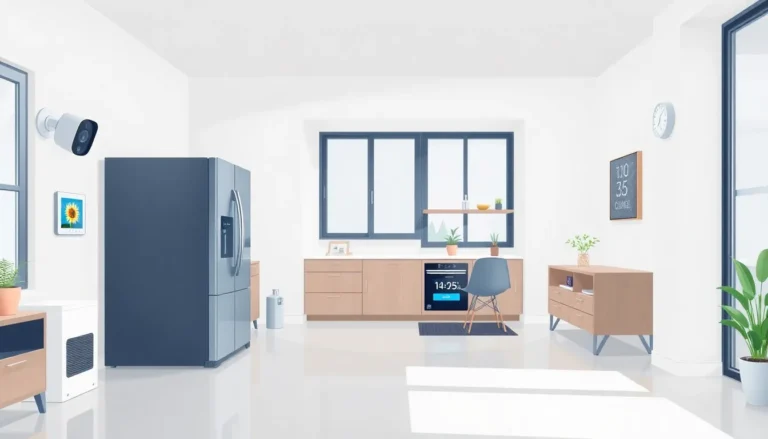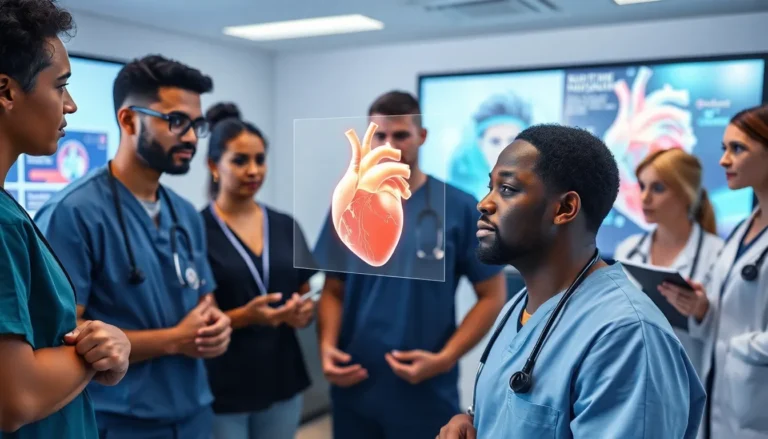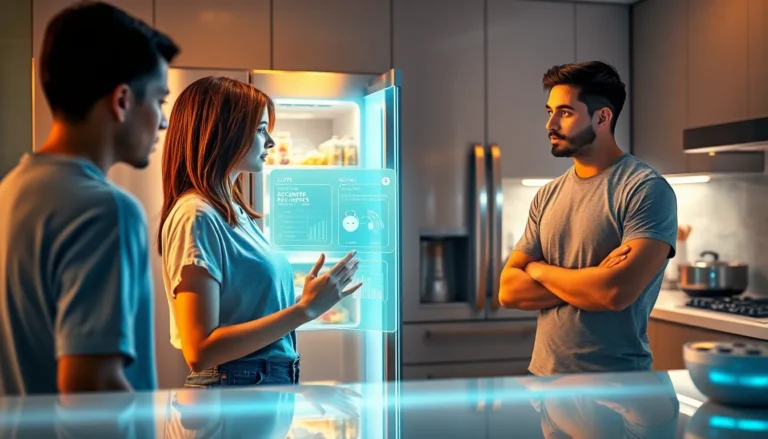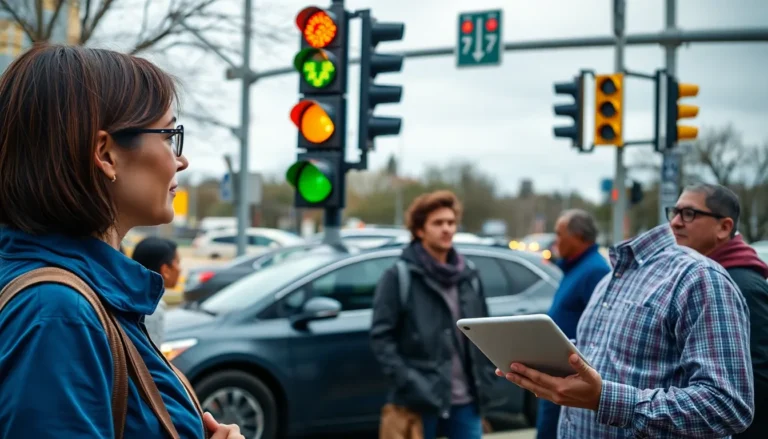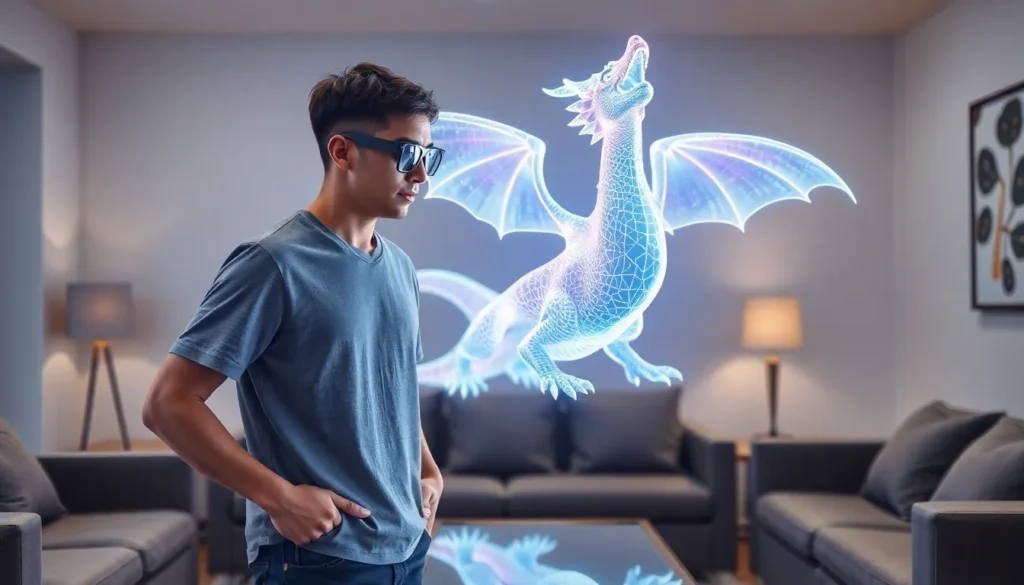Table of Contents
ToggleIn a world where technology blurs the lines between reality and imagination, mixed reality and augmented reality have emerged as the new superheroes of digital experiences. Picture this: you’re sitting in your living room, and suddenly a dragon swoops in, thanks to augmented reality, or you find yourself battling that dragon in your own space with mixed reality. Sounds like a dream, right?
But don’t be fooled—these two tech titans aren’t interchangeable. Each offers its own unique twist on how we interact with digital content. Understanding the differences can mean the difference between a mediocre experience and one that leaves you breathless. Buckle up as we dive into the fascinating world of mixed reality and augmented reality, where the only limit is your imagination (and maybe your Wi-Fi signal).
Understanding Mixed Reality
Mixed reality blends the physical and digital worlds, enabling interactive experiences that integrate both environments. This technology goes beyond augmented reality by allowing real and virtual objects to coexist and interact in real-time.
Definition of Mixed Reality
Mixed reality combines elements from both virtual and augmented realities, creating immersive environments where physical and digital objects coexist. It allows users to interact with digital content as if it were part of their physical surroundings. For instance, users can manipulate 3D holograms while moving within a physical space. This integration leads to a seamless experience that enhances user engagement through real-time interactions.
Key Features of Mixed Reality
Mixed reality showcases several notable features that differentiate it from other technologies. First, real-time interaction enables users to manipulate virtual objects in a physical space seamlessly. Second, spatial awareness fosters navigation and interaction by responding to the user’s environment. Third, natural user interfaces enhance interaction through gestures and voice commands. Lastly, persistence allows digital objects to remain in a physical space, providing continuity in user interactions. Each feature contributes to a more engaging and realistic experience, making mixed reality a powerful tool for various applications.
Exploring Augmented Reality
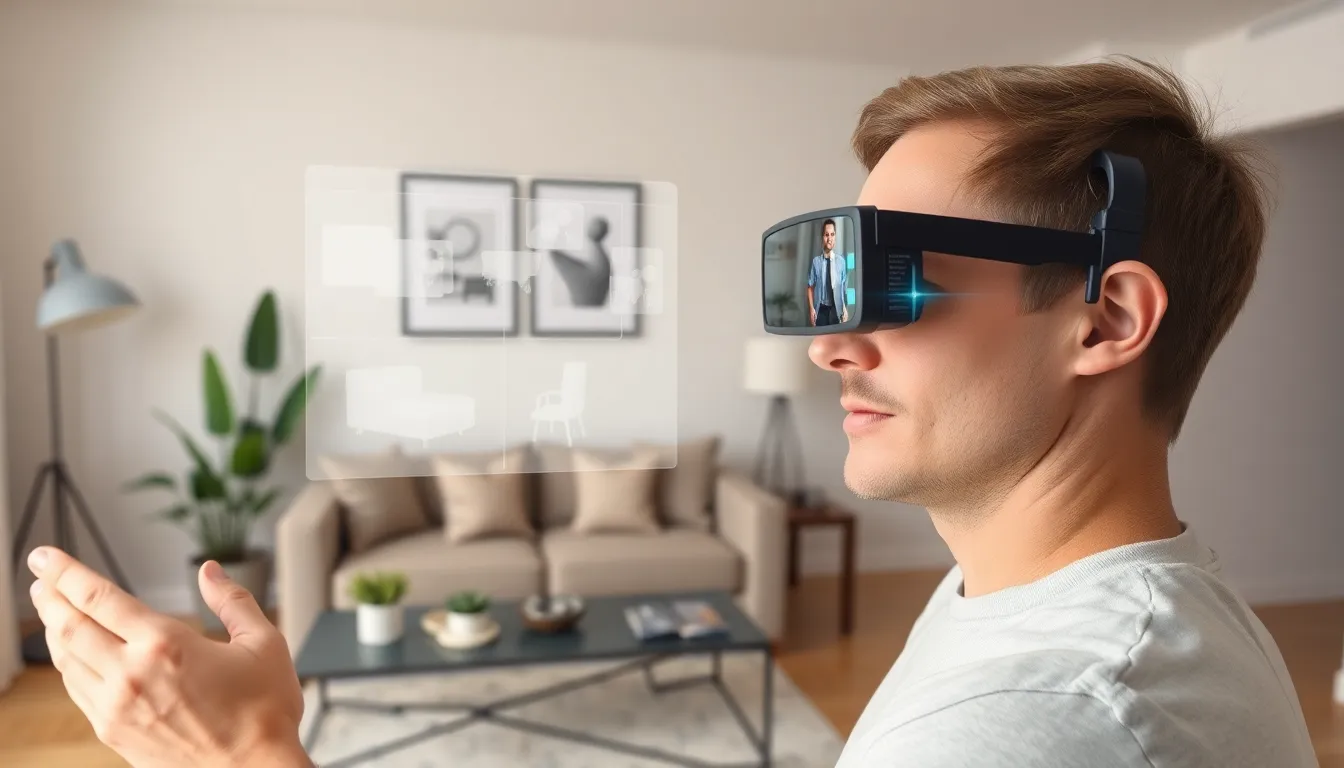
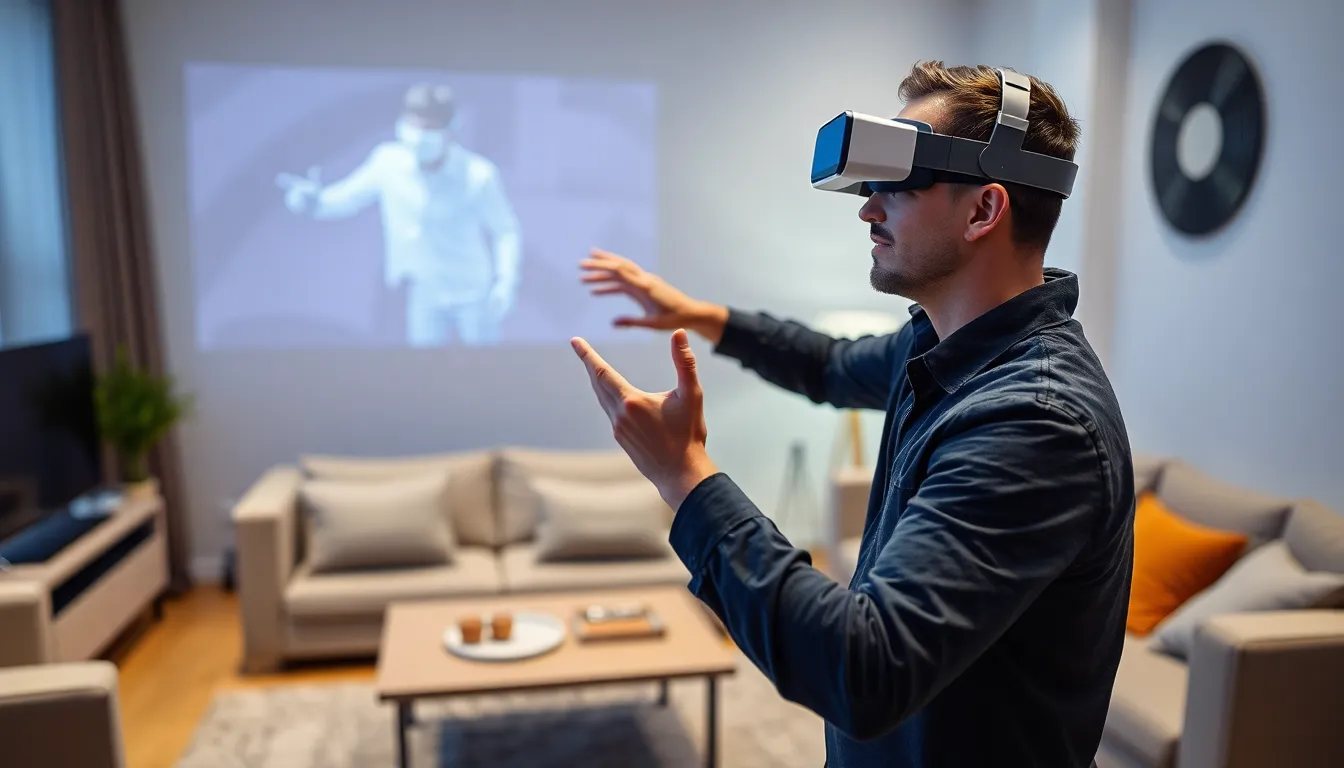
Augmented reality enhances the real-world environment by overlaying digital information on physical objects. Users experience this technology through devices like smartphones and AR glasses, which interact with the real world.
Definition of Augmented Reality
Augmented reality, often abbreviated as AR, integrates digital elements into a user’s view of the real world. This technology alters perceptions of reality without replacing the real-world environment. Examples include mobile apps that allow users to visualize furniture in their homes or see directions projected onto streets. AR enables users to interact with virtual objects that coexist with their physical surroundings.
Key Features of Augmented Reality
Key features define augmented reality, enhancing user experiences. Real-time information overlays occur seamlessly, presenting data as users navigate their environment. Spatial awareness allows devices to understand physical spaces, ensuring accurate placements of digital content. Natural user interfaces facilitate intuitive interactions, enabling users to manipulate elements using gestures. Accessibility across various platforms, like smartphones and tablets, emphasizes AR’s usability and widespread appeal. Enhanced contextual awareness ensures relevance and personalization in overlays.
Comparing Mixed Reality and Augmented Reality
Mixed reality and augmented reality share common goals of enhancing user experiences through digital content integration. Both technologies merge physical environments with virtual elements, allowing users to interact in innovative ways.
Similarities Between the Two
Mixed reality and augmented reality enhance real-world experiences by incorporating digital information. They both rely on spatial awareness to accurately place digital content in the user’s physical environment. Natural user interfaces, such as gestures and voice commands, facilitate intuitive interactions in both technologies. Real-time updates ensure that the information presented remains relevant and contextually appropriate. Accessibility across various devices, like smartphones and smart glasses, enhances user engagement by making both technologies widely available.
Differences in Technology and Applications
Distinct differences set mixed reality apart from augmented reality, particularly in their technology and applications. Mixed reality allows virtual objects to interact dynamically with the real world, enabling more sophisticated user experiences. Users manipulate 3D holograms, which respond to physical environments in real-time. Conversely, augmented reality overlays static digital information onto real-world objects, focusing primarily on enhancing the real world without interaction. Mixed reality finds applications in fields like training and simulation, while augmented reality excels in retail and navigation by providing relevant information on-the-go.
Real-World Applications
Mixed reality and augmented reality operate across various industries, demonstrating their versatility and utility in real-world applications.
Industries Utilizing Mixed Reality
Mixed reality changes how industries operate. The healthcare sector employs MR for surgical simulations, enhancing training by providing realistic scenarios. Manufacturing companies leverage MR for assembly line optimization, allowing workers to visualize processes interactively. Education benefits from MR through immersive learning environments, promoting engagement in subjects like science and history. Real estate utilizes MR for virtual property tours, facilitating client decision-making. Aerospace often adopts MR to simulate complex systems, resulting in improved outcomes.
Industries Utilizing Augmented Reality
Augmented reality transforms numerous fields by providing situational insights. Retail sectors utilize AR for virtual fitting rooms, enabling customers to try products without physical interaction. Automotive industries employ AR for heads-up displays, offering drivers real-time information on speed and navigation. Tourism capitalizes on AR for interactive city guides, enhancing visitor experiences with historical information. Entertainment engages audiences with AR experiences through mobile games and applications, creating immersive interactions. Education also sees the benefit of AR through interactive textbooks, making learning visually appealing and interactive.
Future Trends in Mixed Reality and Augmented Reality
Emerging trends in mixed reality and augmented reality showcase their growing influence across numerous sectors. Both technologies continue to evolve, promising innovative applications.
Potential Developments
Advancements in hardware such as headsets and smart glasses enhance user experiences in mixed reality and augmented reality. Increasingly, developers focus on improving wireless capabilities for seamless interactions. Artificial intelligence integration allows for personalized experiences, adapting content based on user preferences. Cloud computing resources support complex computations, optimizing real-time interactions. Gaming environments also benefit from enhanced graphics, providing immersive storytelling experiences. As the technology matures, cross-industry collaborations foster new applications, promoting MR and AR in healthcare, education, and entertainment.
Impact on Society
Societal impacts of mixed reality and augmented reality are significant, reshaping how individuals interact with digital content. Enhanced education experiences facilitate learning through immersive simulations, encouraging deeper understanding. Healthcare applications improve patient outcomes by providing surgical training and remote consultations. Retail environments transform by offering virtual try-ons, increasing consumer engagement. Furthermore, these technologies increase accessibility for individuals with disabilities, enabling richer interactions with their surroundings. Environmental data visualization aids in understanding global challenges, such as climate change.

